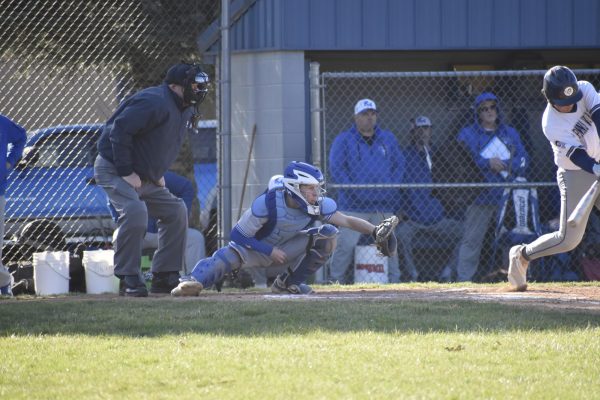Corporal punishment in schools: who does that?
Teachers at Bellwood-Antis High School weigh in on how they feel about corporal punishment in schools.
Thor Schmittle has never REALLY received corporal punishment in school, but if he had it would probably have looked like this.
September 12, 2016
Corporal Punishment in schools seems to be a thing of the past. Now, when you send your child off to school, corporal punishment is seemingly non-existent. In reality, it’s really not. In 19 states corporal punishment is lawful in both public and private schools to minors.
Punishments are far from evenly distributed, mostly based on economic variation. Southern states make up the bulk of states that allow corporal punishment. But within nearly all the states that allow corporal punishment, the wealthier students are less likely to attend schools of the practice than low-income students.
The racial gap becomes more pronounced when you look at the rates of corporal punishment for white students vs. black students within schools that practice it. It’s sad to think that black students are twice more likely to experience corporal punishment than white students attending the same school. According to education weekly it is a 10 percent vs. 5 percent.
At Bellwood-Antis it seems unrealistic to ever think that corporal punishment would be allowed. But what if you went back 30, 40, and even 50 years?
Former teacher and recent substitute, Mrs. Christine Clarr, who went to Bucktail High School, says it never was an issue when she was in school and shouldn’t have been allowed in the first place.
“It wasn’t an issue. It was allowed but I was a teacher’s daughter so it would never happen,” she said when asked if it was an issue in her school when she was younger.
Band Director Mr. Pat Sachese, who went to General McClain High School, said that “With high school marching band you’d be assigned push ups for mistakes. In college they would make the Blue Band run laps.”
Other teachers at BA say that corporal punishment happened while they were in school.
“The kids knew that they were bad, and that they would be punished if they stepped over that line,” said high school teacher Mr. Matt McNaul.
“I graduated high school in 1974 and it was an issue it was definitely used as a deterrent,” said Problems of Democracy teacher, Ms. Andrea Brant.
It’s shocking to think that it is still around today. It’s illegal in Pennsylvania, and it’s not even mentioned in our handbook disciplinary acts. When asked, teachers are either completely against it still being allowed or understand why it is still allowed in the south states.
“I don’t think it should be allowed. Especially because of abuse issues that we might not know may be going on,” said Mrs. Clarr.
Still there are some teachers like Mr. McNaul and Ms. Brant that understand why it is still allowed in those 19 states.
“I think it’s allowed because parents allow it. There is parent consent forms involved with the schools and that allows it to still be here,” said Mr. McNaul.
“I think it would depend on the schools disciplinary code, at our school our disciplinary code works well for us and we have no issues with it. In many inter-city schools in the south they may need to be able to discipline because of the kids not caring when receiving other higher forms of punishment,” said Ms. Brant
Mr. Sachse said he would not want to be the teacher dealing out the corporal punishment.
“It should be kept within the family. Reasonable punishment is appropriate, but I would never feel comfortable paddling someone else’s child.”





